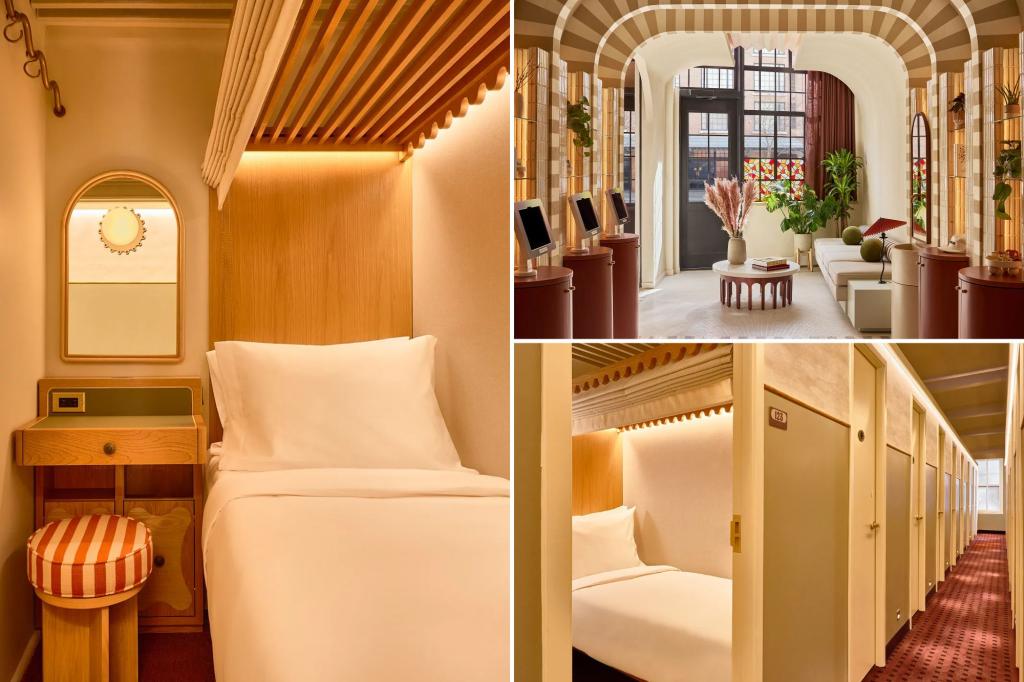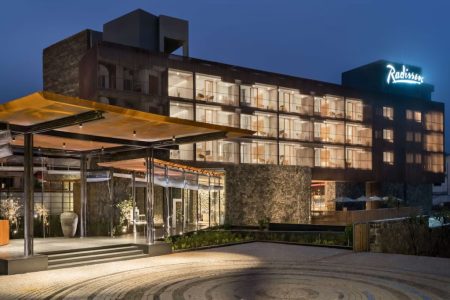Summarize this content to 2000 words in 6 paragraphs
Skid Row has checked out.
Down-and-dirty punk music staple CBGB is now designer John Varvatos’ retail space.
Dark and dank Mars Bar has been replaced by a TD Bank.
And after years of extensive renovation, the scaffolding has finally come down at 338 Bowery, where the last flophouse on the once-notorious strip — the former Whitehouse — has been transformed into the Now Now hotel, NYC’s first truly chic sleeper-cabin lodgings.
President Theodore Roosevelt once wrote an essay comparing the Bowery to hell. But the oldest and previously seediest street in Manhattan has over time become more like a paradise for real estate developers.
Now comes yet another grimy downtown institution, washed clean of graffiti and refurbished to exorcise the counterculture — making room for tourists in search of a more elevated experience of the area.
The Whitehouse, located between Bond and Great Jones across from the luxurious Bowery Hotel, was built in 1917 as a barebones lodging house for struggling immigrants, artists and more.
For decades, the decrepit building stood near the top of the broad boulevard as a cheap but reliable option for those simply looking for a bed and a makeshift ceiling — made of chicken wire — over their head.
As late as the 2010s, guests could book a bed at the Whitehouse Hotel for just $45 — with the few remaining residents paying no more than $8.50.
The chicken wire has come down, though actual ceilings did not go up — and prices have definitely been hiked.
Dovetail + Co., the team behind the newly opened Now Now, hopes the space will remain an affordable, reliable option — but now 100% more fashionable.
On opening day, April 1, about 25 guests stayed in “rooms” featuring “open ceilings” — sharing bathrooms with individual green-tiled toilets and shower stalls, all completely closed and lockable, and shared sinks.
Budget, yes — but far from the grimy experience of yore.
The last look at the “hotel” most people got was in 2018, when the New York Times profiled one of the last remaining tenants — an artist named Sir Shadow, who, current building management said, continued to pop by his old haunt during construction.
Photos showed an old, rundown building that looked like it hadn’t been renovated in decades.
Mismatched walls of paint were peeling, the floors were cracked, furniture that you would find at a charity shop was sparse, lights were dim or completely dark, and the fixtures were falling apart with wires and pipes everywhere.
One of many one-star reviews on Yelp previously set the scene in 2012: “Be warned, that no matter how great your night around town is … when you make your way back into this hole, it’s a real bummer.”
However, stepping into the newly renovated, pocket-sized lobby, guests will find few hints of the formerly humble hostelry.
The same white tiles line the floor, but they now lead to a small, comfortable couch and coffee table set before four self-check-in kiosks, each backlit with warm yellow light spreading across welcoming shades of cream and light brown that cover the walls and furniture.
Here, travelers can expect to pay as little as $125 a night for a single-occupancy room on one of the three carpeted, narrow floors — one a women’s wing — with 177 rooms total, all practically identical.
The Cozy Sleeper Cabins measure just 32.3 square feet, just enough room for a twin bed, a small vanity, a safe and a few hooks and hangers on the wall. Each room offers a luxe Brooklinen robe, slippers, eye mask, earplugs and even a slumber-inducing sound machine.
Those wanting a little more space can book the Now or Never Cabin, where, for an extra $30, travelers get a 53.8-square-foot space featuring murals created by local artists — perhaps an homage to the work Sir Shadow scribbled on the walls during his time there.
Signs hanging on each door outline various rules — no food in the rooms, and you’d better wear headphones for streaming and music — to avoid disrupting other guests’ stays.
The Dovetail team hopes that the sleek design and touches of luxury — including the Wright mattress, Garniet-Thiebaut linens, Grown Alchemist products and Dyson hair dryers — help guests to feel a touch of luxury at a reasonable price point to allow visitors to enjoy NYC in a way they may not have been able to before.
Sure, hostels and Airbnb options can be found for around $150 — and you don’t have to share the air with your neighbor — but otherwise the average price of a Big Apple hotel room, typically measuring about 250 to 300 square feet, is an off-putting $417 per night, the highest NYC rate ever recorded, the New York Times reported last year.
“People are, like, ‘Oh, you know, New York City is the great adventure, the great dream. I wanna visit, I want to see the sights. Go to the small hole-in-the-wall spot that I read about,’ ” Dovetail CEO and Founder Phil Hospod told The Post. “But if you can’t afford a hotel room here, then you just cancel your trip.
“So my hope is we’re able to create something affordable in this super convenient location that we are going to get visitors that wouldn’t otherwise come to the city to actually come and visit,” he said.















